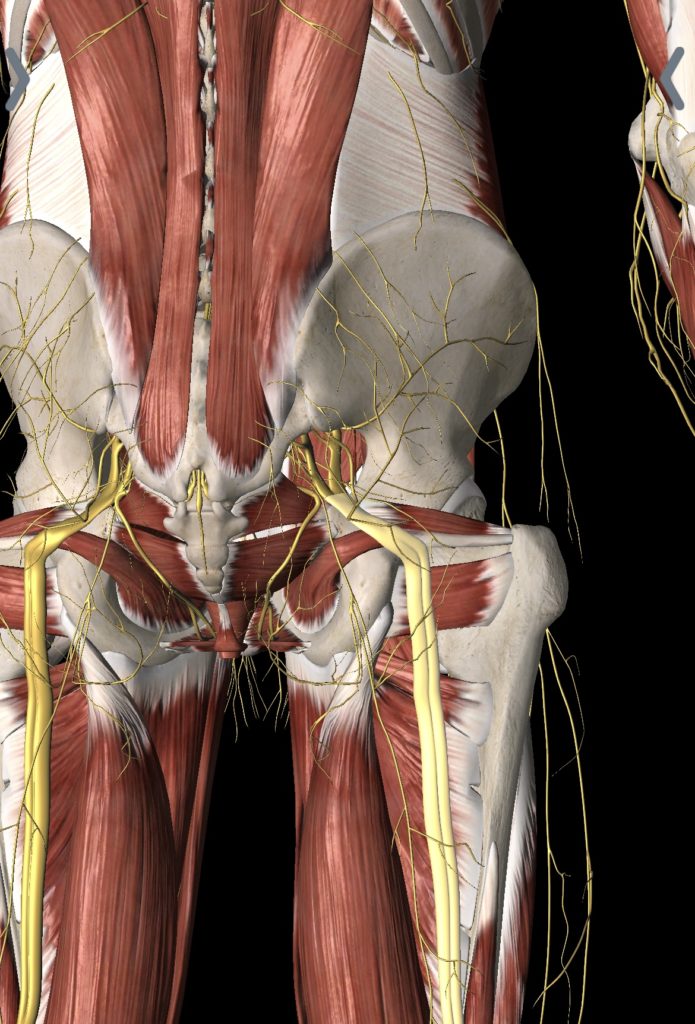
Understanding and Managing Sciatic Pain
by Stephen Mawhinney, Bsc Physiotherapy, Msc Sport and Exercise Medicine
Sciatic pain, commonly referred to as sciatica, is a condition characterized by pain that radiates along the path of the sciatic nerve. This nerve, the longest in the body, runs from the lower back through the hips and buttocks and down each leg. Sciatica typically affects only one side of the body and can range from mild to severe, often impacting daily activities and quality of life.
What Causes Sciatic Pain?
Several conditions can cause sciatica, including:
1. Herniated Disc: When a disc in the spine bulges or ruptures, it can compress the sciatic nerve.
2. Spinal Stenosis: Narrowing of the spinal canal can put pressure on the nerve.
3. Piriformis Syndrome: The piriformis muscle, located in the buttocks, can irritate the sciatic nerve if it spasms or tightens.
4. Spondylolisthesis: A condition where one vertebra slips over another, potentially pinching the nerve.
5. Injury or Trauma: Direct injury to the lower back or spine can lead to sciatic pain.
Symptoms of Sciatica
The hallmark symptom of sciatica is pain that radiates from the lower back to the buttock and down the leg. Other symptoms include:
· Numbness or tingling in the leg or foot
· Muscle weakness in the affected leg
· A burning or sharp pain that worsens with prolonged sitting or standing
· Difficulty moving the leg or foot
Diagnosis of Sciatica
Diagnosis typically involves a physical exam and medical history review. Doctors may perform tests to check muscle strength and reflexes. Imaging tests such as X-rays, MRI, or CT scans can help identify the underlying cause of the nerve compression.
Management and Treatment of Sciatic Pain
Managing sciatic pain involves a combination of self-care measures, medications, physical therapy, and, in severe cases, surgical intervention.
Self-Care Measures
1. Rest: Short periods of rest can help alleviate acute pain, but prolonged inactivity should be avoided.
2. Cold and Heat Therapy: Applying ice packs during the first few days can reduce inflammation, followed by heat packs to relax muscles.
3. Gentle Exercise: Activities like walking, swimming, or yoga can improve flexibility and strengthen muscles, supporting the spine and reducing pressure on the nerve.
Medications
Over-the-counter pain relievers such as ibuprofen or acetaminophen can help manage pain. In some cases, doctors may prescribe stronger medications, including:
· Anti-Inflammatory Drugs: To reduce inflammation and pain.
· Muscle Relaxants: To relieve muscle spasms.
· Antidepressants or Anticonvulsants: For chronic pain management.
Physical Therapy
A physiotherapist/chiropractor can design an exercise program tailored to the individual’s needs, focusing on:
· Strengthening Exercises: To support the spine and improve posture.
· Stretching Exercises: To enhance flexibility and reduce tension on the sciatic nerve.
· Manual Therapy: Techniques such as massage or spinal manipulation to alleviate pain.
Surgical Intervention
Surgery is considered when conservative treatments fail to relieve symptoms, or if there is significant nerve damage. Procedures may include:
· Microdiscectomy: Removal of a herniated disc portion that is pressing on the nerve.
· Laminectomy: Removal of part of the vertebra to widen the spinal canal and reduce nerve pressure.
Preventing Sciatic Pain
While not all causes of sciatica are preventable, certain lifestyle changes can reduce the risk:
1. Regular Exercise: Maintaining a strong core and flexible spine can prevent issues.
2. Proper Posture: Ensuring good posture while sitting, standing, and lifting can minimize stress on the spine.
3. Ergonomic Adjustments: Using supportive chairs and proper lifting techniques can prevent injury.
Conclusion
Sciatic pain can be debilitating, but with the right approach, it is manageable. Understanding the causes and symptoms is the first step towards effective treatment. Combining self-care, medication, physical therapy, and, if necessary, surgical intervention, can provide relief and improve quality of life. Preventive measures, such as regular exercise and proper posture, can also play a crucial role in minimizing the risk of sciatica. If you experience persistent sciatic pain, consulting a healthcare professional is essential for a tailored treatment plan.
More Posts

Running blog: Part two

Running and Injury mechanics

Physiotherapy for Runners with Hip Pain: How to Get Back on Track

Parenting ‘Perils’

Osteoporosis/Bone thinning

Physiotherapy for Jaw pain/TMJ

Pilates now available

Physiotherapy, Pain and hairdressing



